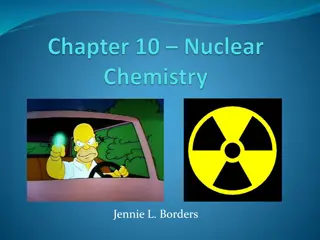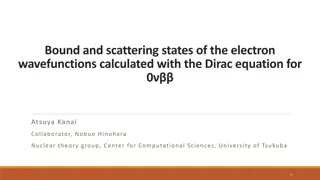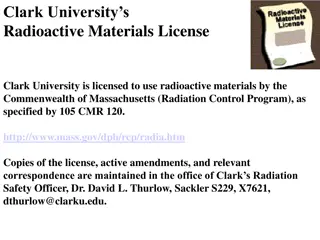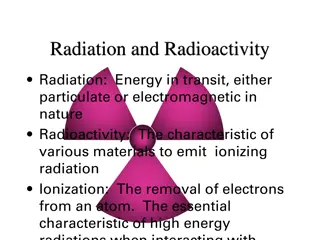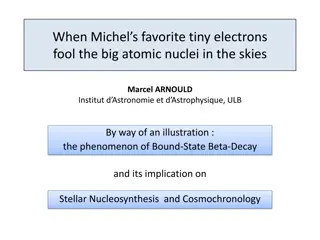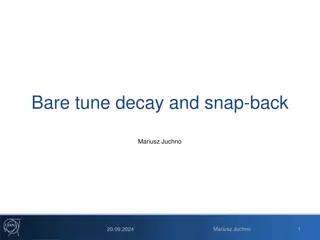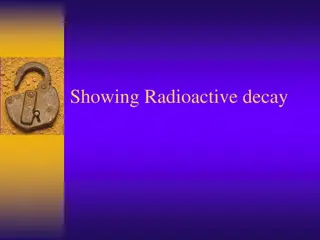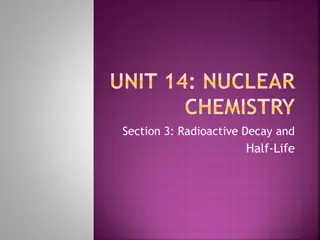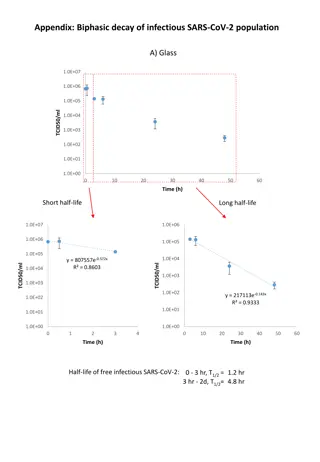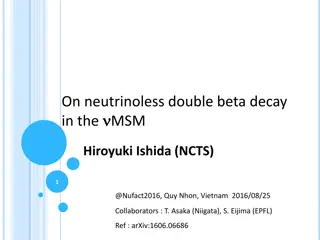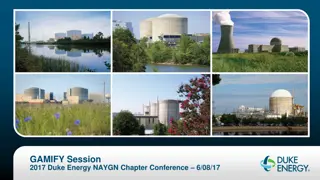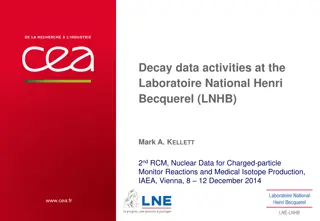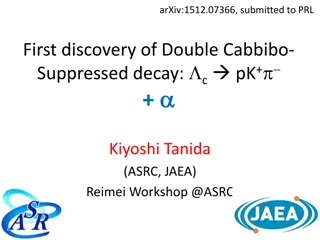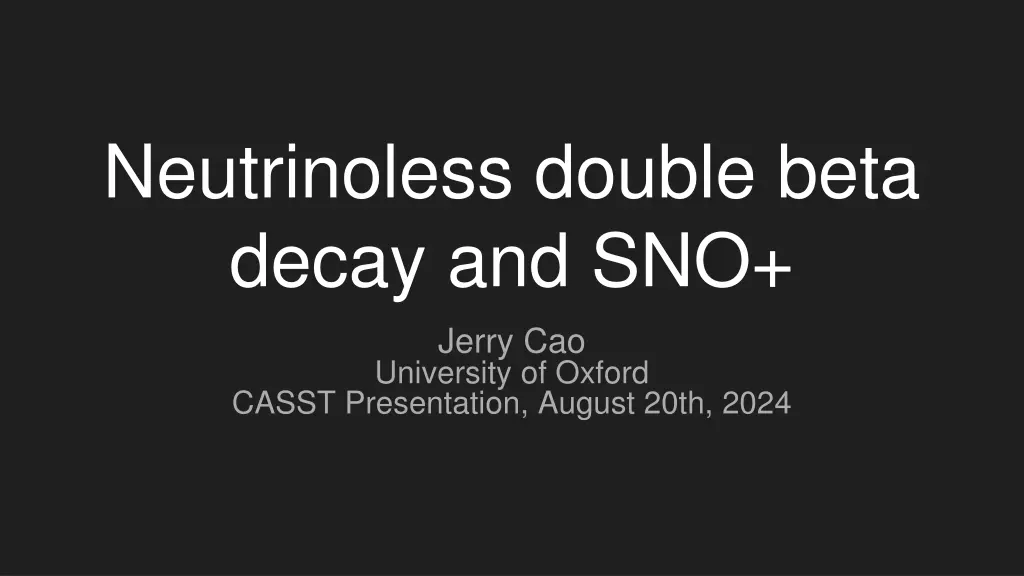
Unraveling Neutrinos: A Journey through Neutrinoless Double Beta Decay and Majorana Neutrinos
Explore the fascinating world of neutrinos through a historical perspective, from their elusive nature to breakthrough experiments like neutrino oscillations. Learn about double beta decay, Majorana neutrinos, and the intricate relationship between neutrinos and the fundamental forces of nature.
Uploaded on | 0 Views
Download Presentation

Please find below an Image/Link to download the presentation.
The content on the website is provided AS IS for your information and personal use only. It may not be sold, licensed, or shared on other websites without obtaining consent from the author. If you encounter any issues during the download, it is possible that the publisher has removed the file from their server.
You are allowed to download the files provided on this website for personal or commercial use, subject to the condition that they are used lawfully. All files are the property of their respective owners.
The content on the website is provided AS IS for your information and personal use only. It may not be sold, licensed, or shared on other websites without obtaining consent from the author.
E N D
Presentation Transcript
Neutrinoless double beta decay and SNO+ Jerry Cao University of Oxford CASST Presentation, August 20th, 2024
Neutrinos (s) Fermions with spin Neutral electromagnetic charge Comes in 3 generations Each generation relates to a specific charged lepton (electrons, muons, taus) Only interacts with the weak force in the Standard Model Credit: BBC Science Focus 2
A (very brief) history of neutrinos decays appears to violate energy and momentum conservations - Pauli postulates the neutrino to solve this problem. A massless, neutral particle that can never be detected I have done a terrible thing, I have postulated a particle that cannot be detected. Wolfgang Pauli on neutrinos, 1930 - Wolfgang Pauli Credit: The Nobel Prize 3
A (very brief) history of neutrinos Detected in 1956 by the Cowan-Reines experiment Solar measured in the 1960s by the Homestake experiment - - - Observed only one third of expected! Neutrino oscillations 2015 Nobel Prize for Art McDonald and Takaaki Kajita for the SNO and Super- Kamiokande experiment Oscillations require neutrinos to have mass Art McDonald Credit: The Nobel Prize 4
Mass? Mass! All other particles get mass by interacting with the Higgs But that requires two chirality of particles - left-handed and right handed The weak force is only left-handed Chirality of particles Credit: ATLAS No right-handed neutrinos 5
Majorana neutrinos One idea to solve this mass acquisition problem Neutrinos have both a left-handed and right-handed component together If reversed - still one left-handed and one right-handed component Neutrinos are their own antiparticles! Ettore Majorana Credit: Mondadori Collection 6
Double beta decay Two of the neutrons in the nucleus of an atom turn into protons simultaneously Emits two electrons ( ) and two neutrinos ( ) Occurs when single beta decay is prohibited but two occur at the same time is possible Half life ~ 10^18-10^21 years - much longer than the age of the universe ~ 10^10 years! Energy graph of double beta decay (Credit: University of Warwick) First observed in 1987 by Michael Moe s group at UC Irvine from Selenium-82 7
Double beta decay But no neutrinos Neutrinoless double beta decay (0 ) Hypothesized mode of that emits no neutrinos Possible if neutrinos are Majorana Neutrinos internally annihilate each other within the reaction Half-life greater than 10^22 - 10^26 years! The smoking gun for Majorana neutrinos Feynman diagrams for 0 and 2 Credit: Giuliani et al., arXiv 1910.04688 8
Energy spectrum of 2 vs 0. Credit: Elisabetta Bossio and Matteo Agostini 2024 J. Phys. G: Nucl. Part. Phys. 51 023001 9
SNO+ Acrylic Vessel filled by the liquid scintillator linear alkylbenzene (LAB) 12m in diameter, almost 10000 PMT sensors 2 km underground in Sudbury, Canada Loading with tellurium Attempts to detect neutrinoless double beta decays of tellurium-130 Concept picture of SNO+ (Credit: SNO+) 10
Why tellurium-130? Massive amount of isotope With Q-value high enough to overcome backgrounds Low rate of 2 as background Tellurium-130 comes as a natural choice Isotopes for double beta decay Credit: SNO+ white paper 11
Sensitivity of SNO+ Will be 0.5% loaded of tellurium ~3.9 tonnes of tellurium, ~1.3 tonnes of Te-130 After 3 years of data taking, a half life bound of 2*10^26 years will be reached at 90% confidence level After 5 years, a half life bound of 5*10^26 years at 90% confidence Current best limit: CUORE, 2.2*10^25 years 12
Thank you! Christine Kraus Steve Biller Steve Sekula SNO+ team (Beymar, Gulliver, Shuai, Ben, Gurpreet, Adil) 13
Questions? 14
References [1] Elisabetta Bossio and Matteo Agostini 2024 J. Phys. G: Nucl. Part. Phys. 51 023001 [2] Giuliani et al, 2020, Double Beta Decay APPEC Committee Report, arXIv 1910.04688 [3] Jeanne Wilson, Neutrinoless Double Beta Decay, TRISEP 2024 [4] Jos Maneira, Neutrino Science, SuSi 2024 [5] Steven Biller, SNO+ with Tellurium, Physics Procedia, Volume 61, 2015, Pages 205- 210, ISSN 1875-3892, [6] The SNO+ collaboration et al, 2021 JINST 16 P08059 15
Relevant backgrounds Tellurium-130 has a Q-value of 2.528 MeV. Backgrounds to 0 : 2 Cosmic (2 km of rock) Cosmogenics (tellurium cooling underground ) External (attenuate by outer volume) U/Th decay chain (identify by tagging and minimize cleaning) Simulated backgrounds for SNO+ Credit: Jeanne Wilson, TRISEP 2024 16

